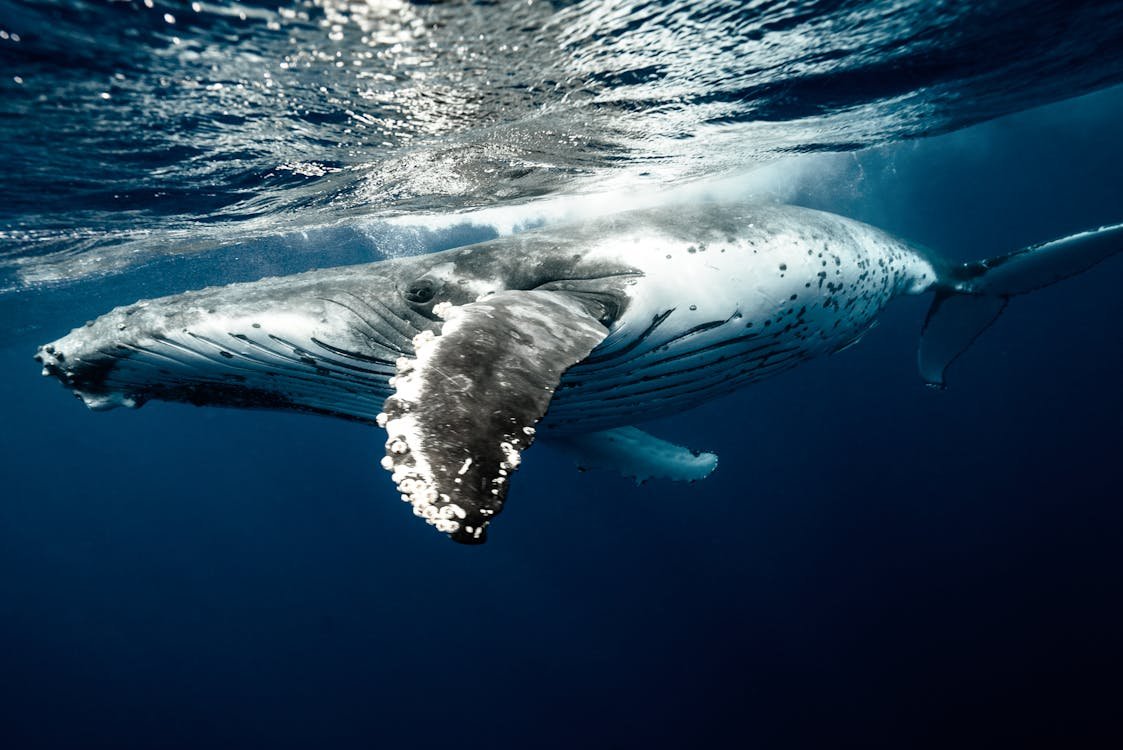Whales and dolphins are two of the most fascinating and intelligent creatures that inhabit the ocean, yet people often get confused when trying to differentiate between them. Despite sharing many similarities, whales and dolphins have distinct characteristics that set them apart. Both belong to the order Cetacea, but there are key differences in their anatomy, behavior, and size. In this article, we will explore the major similarities and differences between whales and dolphins, shedding light on the intriguing world of these marine mammals.
Similarities Between Whales and Dolphins
- Taxonomy and Evolutionary Background
Both whales and dolphins belong to the order Cetacea, making them distant relatives. This order also includes porpoises. Cetacea is divided into two suborders: Mysticeti (baleen whales) and Odontoceti (toothed whales, which include dolphins and porpoises). Despite their different subcategories, whales and dolphins share a common evolutionary ancestor. - Mammalian Traits
Whales and dolphins are both mammals, meaning they breathe air, give birth to live young, and nurse their offspring with milk. Like all mammals, they are warm-blooded and need to come to the surface to breathe through blowholes located on top of their heads. - Social Behavior and Communication
Both whales and dolphins are highly social animals, often living in groups called pods. They communicate using a complex system of clicks, whistles, and other vocalizations. Echolocation, the ability to locate objects by reflecting sound waves, is a trait shared by many species within the Odontoceti group, which includes dolphins and some species of toothed whales. - Intelligence
Dolphins and whales are among the most intelligent animals in the world. Dolphins are especially well-known for their problem-solving skills, playful nature, and ability to learn new tasks. Some species of whales, such as orcas (which are actually dolphins), exhibit highly coordinated hunting techniques and complex social structures.
Key Differences Between Whales and Dolphins
- Size
One of the most obvious differences between whales and dolphins is their size. Whales are generally much larger than dolphins. The blue whale, for example, is the largest animal on Earth, reaching lengths of up to 100 feet (30 meters). Dolphins, on the other hand, are relatively small, with the common bottlenose dolphin growing to around 10-14 feet (3-4 meters). Orcas, often referred to as killer whales, are a notable exception, as they belong to the dolphin family but can grow up to 32 feet (9.7 meters). - Diet and Feeding Mechanisms
Whales are divided into two groups based on their feeding habits: Mysticeti (baleen whales) and Odontoceti (toothed whales). Baleen whales, like the humpback and blue whale, use baleen plates to filter small fish and plankton from the water. Dolphins, being part of the Odontoceti group, have teeth and prey on larger animals, such as fish, squid, and even other marine mammals. Their feeding techniques often involve cooperative hunting. - Physical Appearance
Dolphins have a streamlined, sleek body with a pronounced beak or rostrum, which gives them a distinct appearance. They also tend to have a curved dorsal fin. Whales, on the other hand, usually have a bulkier build and lack the distinct beak of dolphins. Their dorsal fins vary depending on the species, with some whales having large fins (like orcas), while others, like the right whale, lack dorsal fins altogether. - Blowhole Structure
Whales and dolphins differ in the number of blowholes they have. Mysticeti, or baleen whales, have two blowholes, while dolphins and toothed whales (Odontoceti) have only one. This difference in blowhole structure is one way marine biologists differentiate between these groups in the wild. - Lifespan
Whales tend to live longer than dolphins. Some species of whales, like the bowhead whale, can live over 200 years, making them one of the longest-living animals on Earth. Dolphins, while long-lived for marine animals, typically live between 40-60 years, though some species, such as orcas, may live longer.
Notable Species Examples
- Whales
- Blue Whale (Balaenoptera musculus): The largest animal to have ever existed.
- Humpback Whale (Megaptera novaeangliae): Known for its acrobatic breaches and complex songs.
- Sperm Whale (Physeter macrocephalus): A deep-diving toothed whale that preys on giant squid.
- Dolphins
- Bottlenose Dolphin (Tursiops truncatus): Perhaps the most well-known species of dolphin, popular in marine parks and for their playful behavior.
- Orca (Orcinus orca): Though commonly called a killer whale, orcas are actually the largest species of dolphin.
- Spinner Dolphin (Stenella longirostris): Famous for their high-energy spinning jumps.
Conclusion
Whales and dolphins, while closely related and sharing many similarities as marine mammals, exhibit key differences that distinguish them from one another. From their size and physical features to their feeding habits and lifespan, understanding these distinctions allows us to appreciate the unique qualities of both animals. Both play vital roles in marine ecosystems and continue to captivate humans with their intelligence, social structures, and incredible adaptations to life in the ocean.

